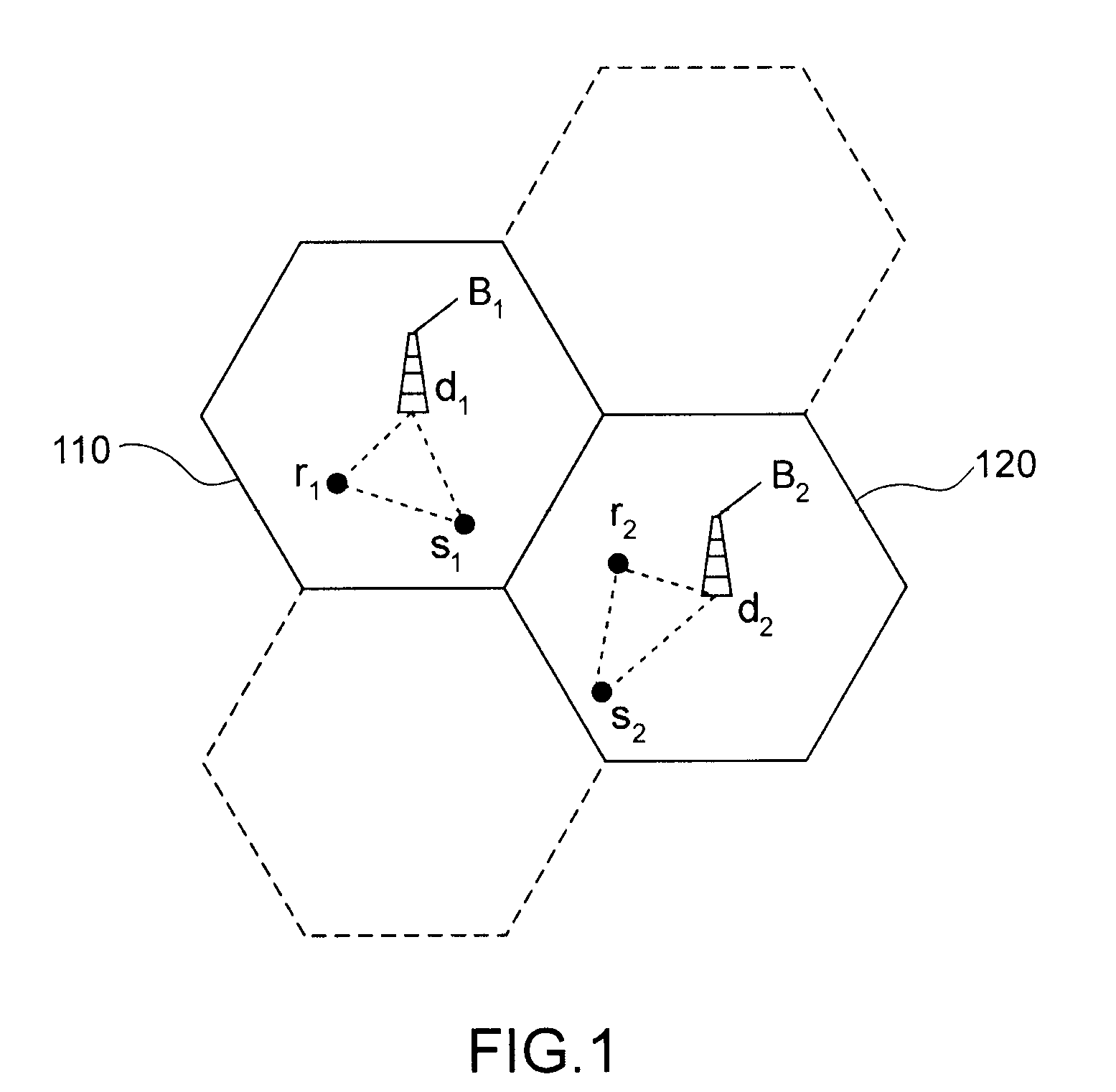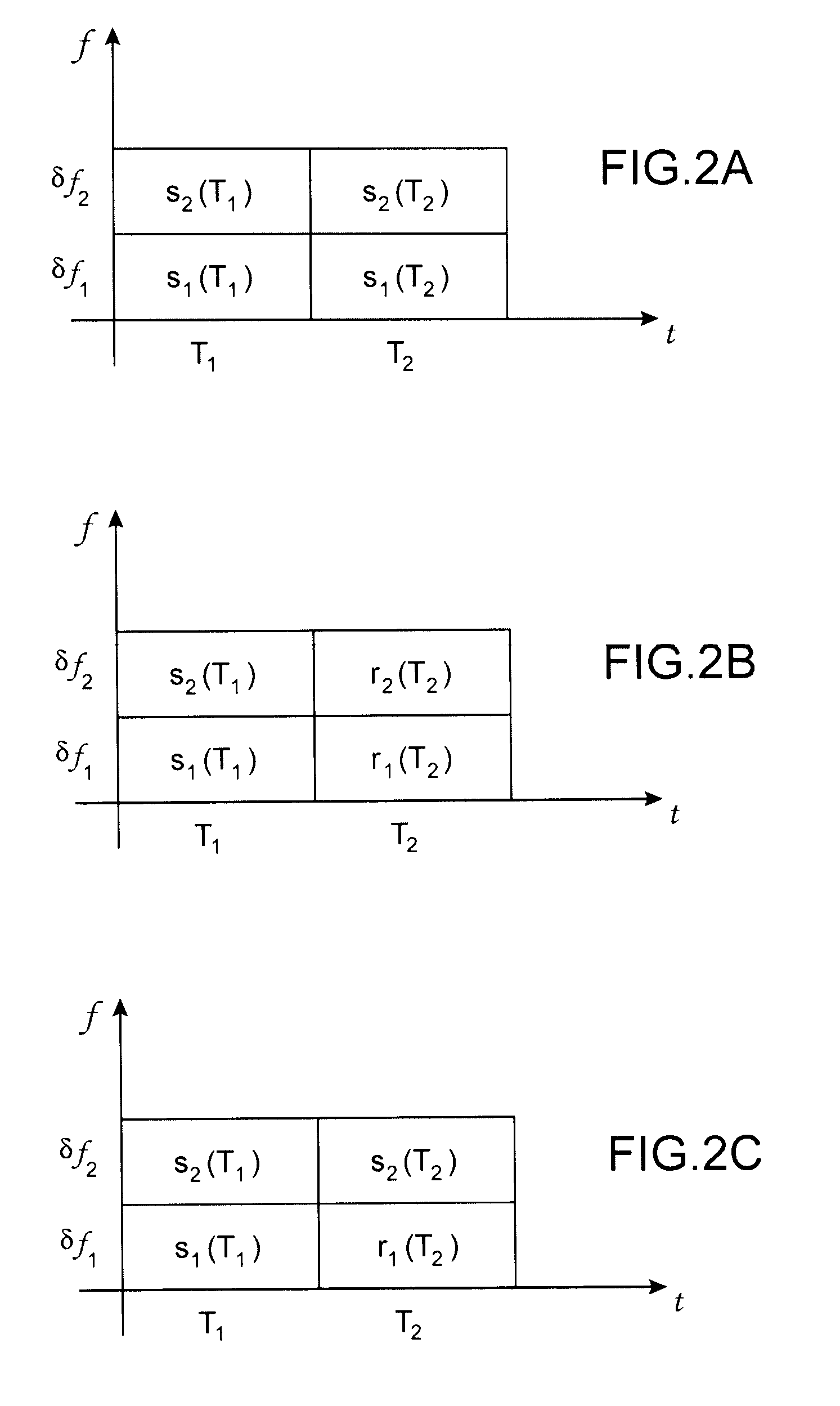Method to allocate transmission resources in a cell network of cooperative type
a cell network and cooperative technology, applied in network traffic/resource management, network planning, wireless commuication services, etc., can solve the problems of overloading the backhaul network connecting the base stations, cell networks using relay cooperation raise new problems in inter and intracellular interference, and allocation strategy would be heavy on transmission resources
- Summary
- Abstract
- Description
- Claims
- Application Information
AI Technical Summary
Benefits of technology
Problems solved by technology
Method used
Image
Examples
Embodiment Construction
[0038]A cell network of cooperative type is again considered in which the cooperation strategy has recourse to relays operating in half-duplex mode. Therefore, each cell may comprise a group of sources, a group of receivers and a group of relays, this latter group being empty if no cooperation via relay is envisaged in the cell under consideration. When a cell served by a base station is itself divided into sectors or micro-cells and if an allocation of resources is provided in each sector / micro-cell, it is understood, without any loss of general meaning, that the term “cell” shall apply to the basic entity in which the allocation of resources is made.
[0039]In general, the cell network uses transmission resources which may be transmission timeslots (cf. TDMA system), frequencies (cf. FDMA system), frequency chunks (cf. OFDMA system), orthogonal codes (cf. CDMA system) or combinations of said resources.
[0040]In one preferred embodiment relating to the OFDMA system, the resources are ...
PUM
 Login to View More
Login to View More Abstract
Description
Claims
Application Information
 Login to View More
Login to View More - R&D
- Intellectual Property
- Life Sciences
- Materials
- Tech Scout
- Unparalleled Data Quality
- Higher Quality Content
- 60% Fewer Hallucinations
Browse by: Latest US Patents, China's latest patents, Technical Efficacy Thesaurus, Application Domain, Technology Topic, Popular Technical Reports.
© 2025 PatSnap. All rights reserved.Legal|Privacy policy|Modern Slavery Act Transparency Statement|Sitemap|About US| Contact US: help@patsnap.com



